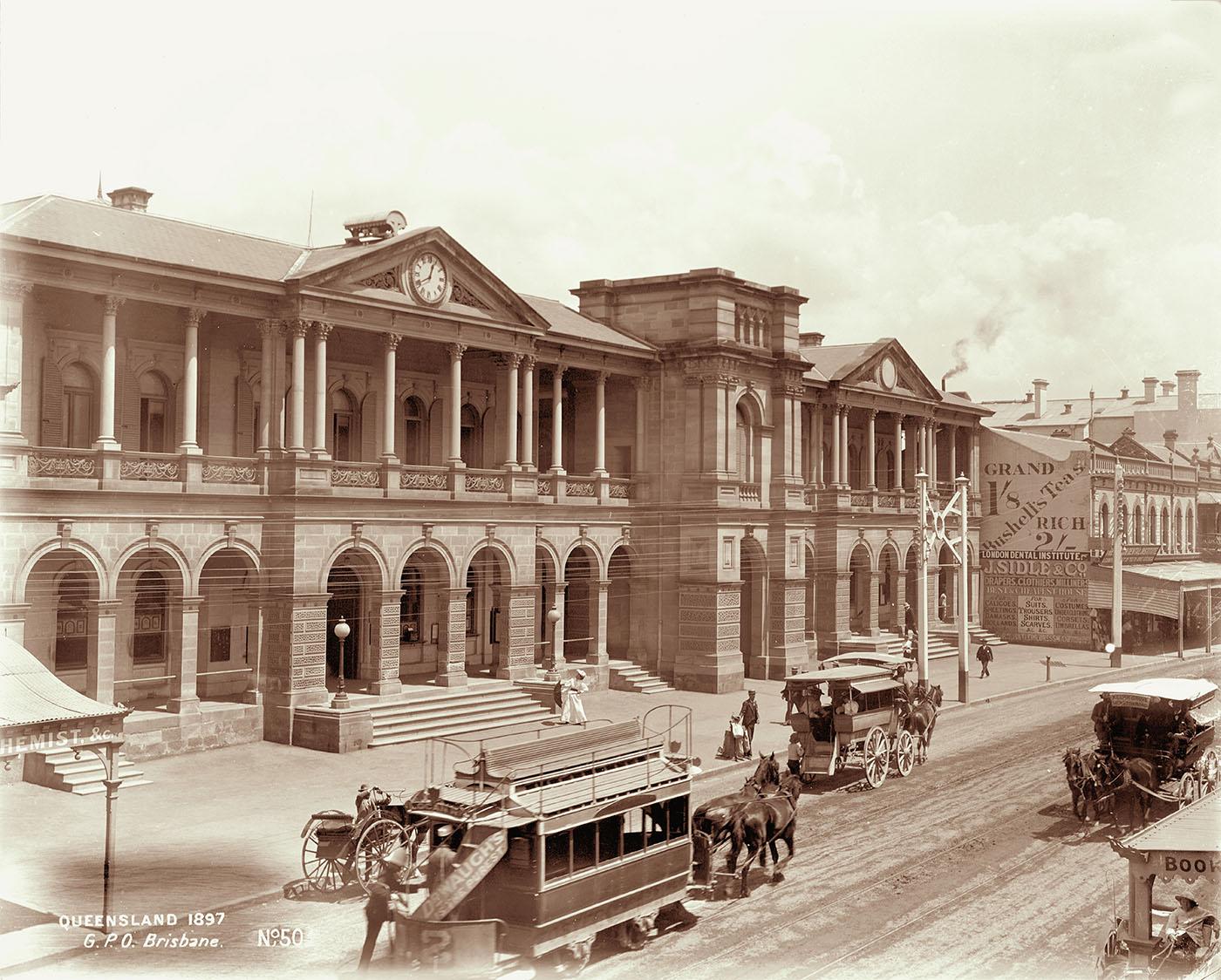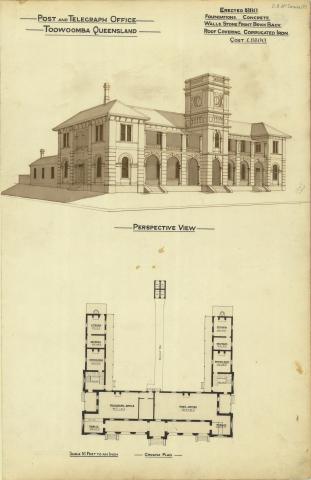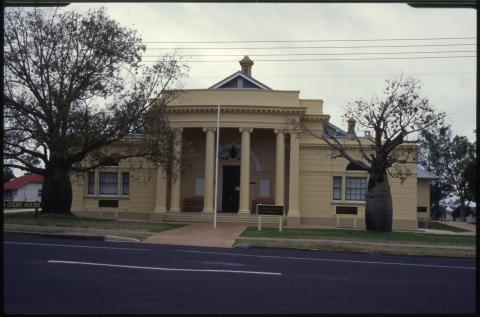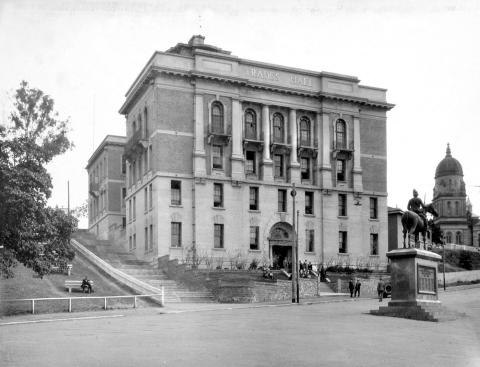
- News of the day
-
The Telegraph, Monday 14 December 1925
Reminiscences of the Post Office
- Old Times and Old Hands -
[...] At the close of 1876 the administrative staff numbered about a dozen, and the Central T.O. [Telegraph Office] staff comprised one stationmaster (makes one think of the railways), 16 operators, three clerks, one line repairer, and 11 messengers, exclusive of 40 overseers and workmen engaged on construction and maintenance in the country districts. About the same time a small box-like office was opened at the G.P.O. in Queen Street, as a public convenience for the reception of telegrams, which were carried by a special messenger at short intervals to the central office for transmission over the lines.
[...] At this period too, 120 telegraph stations were scattered throughout the colony, manned by about 200 officials of all ranks - 4,708 miles of line and 6,156 miles of wire had been erected since the inauguration of the system [...]. The population was set down at 181,000 odd giving 38 inhabitants to each mile of telegraph line, being considerably more than any other colony, with the exception of West Australia.
- Background
-
The Brisbane General Post Office complex was established in 1872 to service the communications requirements of the colony of Queensland, a reflection of Queensland's increasing population and prosperity. Subsequent additions and extensions to the complex, including the telegraph office and the telephone exchange reflect the development of Queensland's post and telecommunications services, both as a colony and as part of the Commonwealth of Australia. The history of the complex mirrors that of the communications industry in Australia, including changes in technology and administration from 1872 to the present. (Criterion A.4. Australian Historic Themes 3.7 Establishing communications; 7.6 Administering Australia; 7.4 Federating Australia).
The Brisbane General Post Office, incorporating its twin building, the former Telegraph Office, is an important example of a large Nineteenth Century public building in the Italianate style, the work of former Queensland Colonial Architect F D G Stanley, who was responsible for a number of Brisbane's prominent early public buildings in Brisbane and regional Queensland. Its design features, including arcaded verandah and fine Italianate detailing, are complemented by the use of local sandstone and porphyry. Much of the original decor also remains, although some is concealed above false ceilings. The later Elizabeth Street building in the complex was designed in 1908 by another prominent Queensland architect, Thomas Pye, on behalf of the Commonwealth Postmaster General. It is a good example of a public building in the late Federation Free Classical style, with strong utilitarian elements (Criteria D.2, H.1).
The Brisbane General Post Office is important as a prominent historic public building complex in central Brisbane, a key meeting place and civic focus for Brisbane residents since 1872. It also sits within an important historic precinct in the city, combining with the early Twentieth Century Shrine of Remembrance and Anzac Square to form a prominent and central public space. The General Post Office contributes strongly to the aesthetic impact of this precinct and the wider Brisbane streetscape, as it has done since the 1870s. (Criteria A.4, E.1. Australian Historic Themes 4.14 Creating capital cities; 4.15 Developing city centres).
The Queensland Postal Honour Board is a significant fixture within the Brisbane General Post Office, although it is currently not affixed. It is important as a symbol of recognition of the wartime service of Queensland postal workers by their colleagues and families. The relief map of the Gallipoli Peninsula illustrates the profound impact that the Gallipoli campaign especially had for Australians, that people from all walks of life were affected by the loss of Australian lives. It is also significant for its excellent craftsmanship and design as a focus for the grief and remembrance of Queensland postal staff.Courtesy of the Australian Heritage Database
/153.0279806,-27.4675892,7/450x450@2x.png?access_token=pk.eyJ1IjoicXNhLWRpc2NvLXFsZCIsImEiOiJjamJmdTgyZXEyeWNjMnlxZm8xcmtieHgxIn0.lmT9J5tTPKGuuccQgCVSAg)



